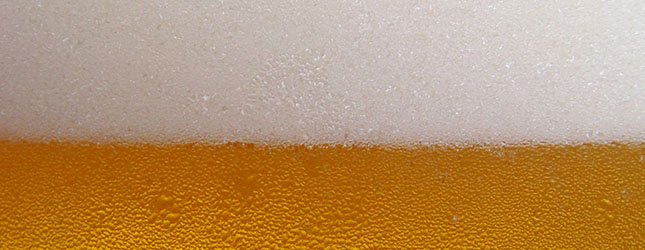Is Africa the drunk continent? Time magazine says it is. "Africa has a drinking problem", a recent article on its website claimed, and “is in no shape to cope with an influx of alcohol”. Furthermore, it warned, "alcoholism is on the rise as beverage multinationals circle".
But how true is the claim that "Africa" has an alcohol problem and can the claim really be applied to a continent and 55 states with varied drinking patterns?
The article, published on Time.com, cites the World Health Organization’s 2011 Global Status Report on Alcohol and Health. The WHO report looks at "global, regional and country consumption of alcohol, patterns of drinking, health consequences and policy responses".
How much does Africa drink?
The WHO measures per capita alcohol consumption in litres of pure alcohol and includes people aged 15 years or older. This incorporates both regulated alcohol sales and "alcohol that is not taxed and is outside the usual system of governmental control".
According to the WHO data, the world's per capita alcohol consumption is 6.13 litres per year. The WHO Africa region's per capita alcohol consumption is only 0.02 litres higher at 6.15 litres a year. This is lower than Europe and the Americas, which consume 12.18 litres and 8.67 litres respectively. The regions that consume the least alcohol are Southeast Asia (2.2 litres) and the Eastern Mediterranean (0.65 litres).
Significantly, the WHO excludes seven African countries with large Muslim populations – Egypt, Libya, Tunisia, Djibouti, Morocco, Somalia and Sudan – from the "Africa region" and categorises them as "Eastern Mediterranean". In most of them, alcohol sales are either restricted or banned.
While the WHO regional averages provide a unique guide to alcohol consumption rates, they provide little insight into the extremely varied drinking patterns of individual countries which are the focus of more detailed country profiles. The data is also several years old due to the time taken to collate it. Furthermore, the accuracy of WHO data, as we have shown in previous Africa Check reports, is not beyond question.
Kenya and South Africa's drinking patterns
The central focus of the article is on Kenya and, to a much lesser extent, South Africa. Kenya, Time claims, is a country that is "consuming ever more alcohol". South Africa is described as "one of the world’s heaviest drinking nations" despite the fact that the WHO ranks South Africa in 55th place out of 189 countries. (Kenya lies at 118th. The heaviest drinking nation, according to the data, is Moldova followed by the Czech Republic).
The article includes a quote from a Nairobi social worker. "Do we drink because we're Kenyan or are we Kenyan because we drink? That is the question," he asks. But the article fails to ask how much Kenyans and South Africans drink.
Between 2003 and 2005, according to the 2011 WHO report, Kenya's adult per capita alcohol consumption was 4.1 litres a year. In 2003, data showed that 74.4 per cent of Kenyans were lifetime abstainers and 85.4 per cent had not consumed alcohol in the last 12 months. A 2012 rapid situation assessment of the status of drug and substance abuse in Kenya found that 86.4 per cent of the population reported that they did not consume alcohol.
Between 2003 and 2005 South Africa's adult per capita alcohol consumption was 9.5 litres a year, according to the WHO report. Data from 2004 revealed that 65.2 per cent of South Africans were lifetime abstainers and 72.9 per cent had not consumed alcohol in the last 12 months.
A similar abstention rate of 72.3 per cent was found in a 2011 study published in the African Journal of Psychiatry. The study used data from the 2008 South African National HIV, Incidence, Behaviour and Communication survey.
The 53 other countries in Africa
The remaining 53 African countries vary greatly in their consumption rates, according to the WHO. Countries that have large Muslim populations tend to have low per capita alcohol consumption rates. Examples of these include Mali (1 litre per person per year on average), Comoros (0.4 litres), Guinea (0.8), Libya (0.11 litres), Egypt (0.37 litres), Mauritania (0.1 litres), Somalia (0.5 litres) and Algeria (1 litre). An article that looked at two of these countries and concluded that “Africans are teetotalers” would suffer from the same flaws as the Time article.Higher up the spectrum you’ll find the Democratic Republic of the Congo (4.2 litres), Angola (5.4 litres) and Tanzania (6.8 litres). Uganda (11.9 litres) and Nigeria (12.3 litres) have Africa’s highest consumption rates. However, Nigeria’s consumption rate is only 0.01 litres higher than the WHO European region’s average consumption rate.
The WHO defines heavy episodic drinking as consuming at least 60 grams or more of pure alcohol on at least one occasion weekly. Standard drink measures vary from country to country, but in South Africa a standard drink contains 12 grams of pure alcohol. Therefore, consuming five-and-a-half glasses of wine (at a typical 12 per cent alcohol volume) or five 340ml beers (at a typical 5% alcohol volume) at least once a week would be considered “heavy episodic drinking”.
The WHO Africa region has the highest prevalence of heavy episodic drinking. According to the WHO data, just over 25% of drinkers in the African countries it includes in the region can be classed as “heavy episodic drinkers”. However, the WHO does not have information on the prevalence of such drinking in 20 African countries.
While the Time article reports that 25.1 per cent of drinkers in the WHO Africa region drink too much, it fails to mention that the majority of people on the continent don’t drink at all, according to the WHO data. The WHO estimated that in 2004, 57.3 per cent of the “Africa region” were lifetime abstainers and 70.8 per cent reported not consuming alcohol in a year. By comparison, only 18.9% of Europeans and 17.7 per cent of the United States population were lifetime abstainers.
Conclusion – Snappy headline not supported by the data
Alcohol abuse can have detrimental effects on individuals and societies. A thorough understanding of the problem is a prerequisite to intervention. However, the claim that “Africa has a drinking problem” reveals less about Africa’s drinking habits than it does about Time’s perception of Africa. The “Dark Continent” has merely been renamed the “Drunk Continent”.Drinking patterns vary greatly both within and across Africa’s 55 countries. While some African countries have high levels of consumption and binge drinking others have negligible consumption rates and high levels of abstention. By ignoring these important differences, the article perpetuates the perception that Africa is a homogenous continent.
“Africa’s drinking problem” may be a snappier headline than “Kenya and South Africa’s drinking problem” but the generalisation ignores a broad spectrum of drinking patterns and attitudes towards alcohol across the continent.
© Copyright Africa Check 2013. This article was first published on: www.africacheck.org.


